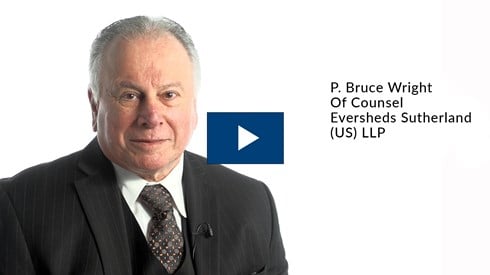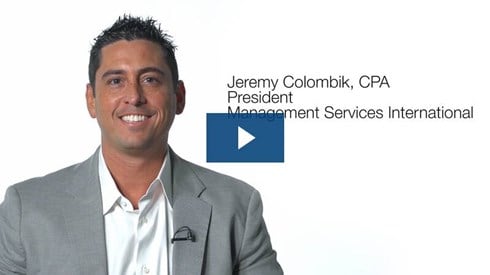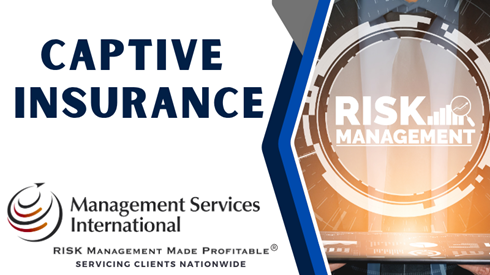Maximizing Cost Efficiency: Using Unrated Paper with Captive Insurance

Jeremy Colombik , Adam Perea , Management Services International | April 29, 2025

In today's increasingly complex business landscape, companies are continually seeking innovative ways to mitigate risk and reduce insurance costs. One strategy gaining traction among savvy risk managers is the use of unrated paper in conjunction with a captive insurance company. This approach allows organizations to optimize their risk financing structures while maintaining financial stability and regulatory compliance.
Unrated paper refers to insurance policies underwritten by nonrated or less traditional insurers. These insurers may not have credit ratings from agencies like S&P or Moody's but can still offer competitive coverage and pricing. While some may perceive unrated paper as risky, when used judiciously and in combination with a well-managed captive insurance company, it can be a powerful tool for cost savings and risk management.
A single-parent captive insurance company is a wholly owned subsidiary established by a parent company to provide insurance coverage primarily for the parent company's risks. Captives offer numerous advantages, including greater control over coverage, tailored policies, potential tax benefits, and the ability to capture underwriting profits. By integrating unrated paper into the captive structure, companies can enhance these benefits further.
One primary motivation for incorporating unrated paper into a captive insurance program is cost efficiency. Unrated insurers often have lower overhead costs than their rated counterparts, allowing them to offer competitive premiums. This can result in significant savings for companies, particularly those operating in high-risk industries or facing challenging market conditions.
Additionally, unrated insurers may be more willing to customize coverage to meet specific risk management needs. This flexibility enables companies to obtain tailored policies that address their unique exposures more effectively than standard off-the-shelf products offered by rated insurers. By leveraging the underwriting expertise of unrated insurers alongside the captive's risk management capabilities, companies can optimize coverage while minimizing costs.
Moreover, regulatory requirements governing captives and the use of unrated paper vary by jurisdiction. Companies must ensure compliance with all relevant regulations to avoid legal and financial consequences. Working closely with experienced legal and insurance advisers can help navigate these complexities and ensure that the captive structure remains compliant and effective.
The strategic integration of unrated paper with a captive insurance company offers companies a powerful tool for optimizing risk financing and reducing insurance costs. By leveraging the cost efficiencies and flexibility of unrated insurers alongside the benefits of a captive structure, organizations can achieve greater control over their insurance programs while realizing significant savings. However, careful evaluation, due diligence, and compliance with regulatory requirements are essential to mitigate potential risks effectively. With proper oversight and expertise, companies can unlock the full potential of this innovative risk management approach.
What Kind of Risk Can I Write on a Nonadmitted Basis?
In the dynamic landscape of insurance, there exists a realm where traditional norms are challenged and innovative solutions thrive. This frontier is embodied by unrated and nonadmitted insurers, which are entities that operate outside the confines of traditional accreditation and regulatory frameworks. Despite the absence of conventional endorsements, these insurers play a vital role in providing coverage for risks that fall beyond the scope of traditional markets.
Understanding the types of policies writable on unrated and nonadmitted paper is essential for businesses seeking tailored solutions to their unique risk exposures.
- Surplus lines insurance. Surplus lines insurance, also known as nonadmitted insurance, provides coverage for risks that cannot be adequately insured through admitted insurers due to their unusual nature or high-risk profile. Unrated and nonadmitted insurers participate extensively in this market, offering surplus line policies for risks ranging from high-value properties and unique liability exposures to specialized industries like entertainment or equine insurance.
- High-risk insurance. Certain industries or activities are deemed high-risk by traditional insurers, making it challenging for businesses to obtain coverage through admitted markets. Unrated and nonadmitted insurers specialize in underwriting high-risk insurance, including construction, logging, aviation, and hazardous waste management. These insurers provide essential coverage for businesses operating in inherently risky environments, albeit at higher premiums due to the elevated risk levels.
- Specialty lines insurance. Unrated and nonadmitted insurers often focus on niche markets or specialized industries that mainstream insurers may overlook. This includes coverage for unique risks such as cyber liability, directors and officers insurance, and environmental liability. By leveraging their expertise in these niche areas, unrated and nonadmitted insurers offer tailored coverage solutions that address the specific needs of businesses operating in these sectors.
- Alternative risk transfer solutions. Unrated and nonadmitted insurers play a significant role in the alternative risk transfer market, providing innovative solutions beyond traditional insurance. These include captive insurance programs, risk retention groups, and self-insurance arrangements tailored to businesses' specific needs and risk appetites. By leveraging alternative risk transfer mechanisms, companies can achieve greater control over their insurance programs and potentially reduce costs.
- Specialized liability coverage. Unrated and nonadmitted insurers offer specialized liability coverage for risks that fall outside the scope of traditional policies. This could include coverage for emerging liabilities such as cyber risks, environmental liabilities, or product recall expenses. By partnering with unrated and nonadmitted insurers specializing in these areas, businesses can obtain comprehensive liability protection tailored to their unique risk exposures.
While unrated and nonadmitted insurers provide valuable coverage options, it's essential for businesses to exercise caution and thoroughly conduct due diligence when selecting an insurer.
Without the oversight of regulatory bodies and traditional rating agencies, there may be concerns about the financial stability and claims-paying ability of these insurers. By working with reputable insurance brokers and conducting rigorous risk assessments, businesses can effectively both mitigate potential risks and secure the coverage they need.
Jeremy Colombik , Adam Perea , Management Services International | April 29, 2025


